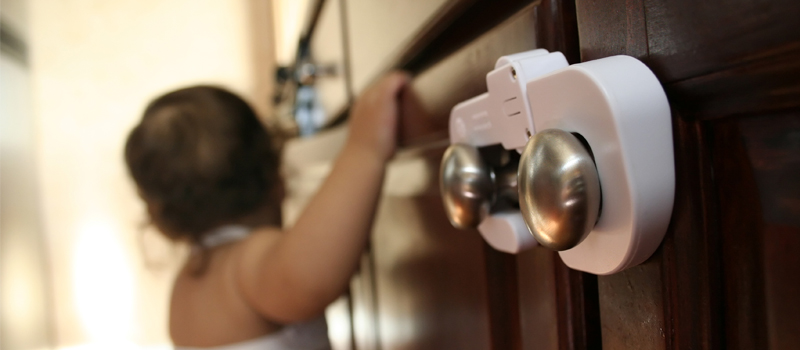Childproofing Your Home
Childproofing Your Home

Childproofing Your Home
Unlike painting the walls or installing new carpet, childproofing your home is not a one-and-done deal. It's an ongoing process that requires constant vigilance and awareness. Here are some ideas that can help keep your kids safe.
Look for Obvious Hazards
Obvious hazards can be broken down into two categories. One consists of household items or features that can be harmful. The other consists of high-risk areas around the home.
Potential Household Hazards
Potential household hazards include items that range from electrical outlets to medications, kitchen utensils to laundry detergent pods and other cleaning agents. Such potential hazards need to be stored in secure places where curious kids are not able to access them.
Consider investing in childproof latches for drawers and cabinets. Store utensils and medications far out of reach, secure all cords and wires, and cover unused electrical outlets.
Other potential hazards include furniture, electronics or other large objects that could be accidentally tipped over. Think about using wall brackets to secure heavy items, as well as non-slip backing for throw rugs.
High-Risk Areas
Kitchens, basements and garages were ranked as the highest-risk areas around the home, according to a 2023 Childproofing Report. All three areas typically contain potentially hazardous tools and materials.
Children may regularly need to be in the kitchen, but they may not need to go into the basement or garage. Consider installing latches or locks near the top of the garage or basement doors, only allowing access when accompanied by an adult.
Bathrooms are another room that can be made safer with cabinet latches, non-slip bathmats and adult supervision.
And don't forget the stairways. Baby gates can be useful at the top and bottom of stairwells.
Get Down to a Child's Level
Once all the obvious hazards are addressed, it's time to get down to the not-so-obvious hazards. One way to do this is to actually get down to the height of a child and go through the house looking for things that could be harmful.
Here you may discover things like the ball of tangled cords beneath the computer area, the reachable knobs on the stove, and the potted plant by the front door. Keep a lookout for things that can be grabbed, leaned on, or put in a mouth.
Use common sense and a child's point of view to remove, secure or otherwise adjust things that could cause harm. It may also be useful to keep the leading causes of childhood injuries in mind. Nationwide Children's Hospital reports they are:
- Choking, suffocation
- Drowning
- Falls
- Burns, fire
- Guns
- Poison
Practice Ongoing Awarenss
Meticulously going through your home to address potential hazards is a good way to start the childproofing process.
Make sure guests put their purses and bags in areas that can't be reached. Do the same with shopping bags, new purchases and anything else that comes into your home.
Awareness is one of the main keys to preventing injury and accidents while helping to ensure protection and peace of mind. For even more protection and peace of mind, explore the home insurance policies at National General.
